Adventure nature journaling and sketching can provide a therapeutic escape from the hustle and bustle of daily life. However, it’s important to be well-prepared and equipped with the right safety gear. First aid kits are a crucial component of any adventurer’s toolkit, particularly for those who enjoy sketching and journaling in nature. As you venture off the beaten path to capture the beauty of the outdoors, make sure you’re taking the necessary precautions to protect yourself.
Key Takeaways
- Adventure nature journaling and sketching require proper safety precautions to avoid accidents or injuries.
- First aid kits are essential components of any adventurer’s toolkit for sketching safety.
- Choosing the appropriate first aid kit requires careful consideration of factors such as size, portability, variety of medical supplies, and level of training required to use the kit effectively.
Importance of Adventure Safety
Adventure nature journaling and sketching allow individuals to immerse themselves in the natural world, surrounded by breathtaking landscapes and stunning scenery. While these activities can be both inspiring and therapeutic, they can also be hazardous without proper safety precautions. That’s why it’s crucial to prioritize adventure safety when exploring the great outdoors for artistic purposes.
Outdoor enthusiasts must be aware of the risks involved in adventure-based activities. These risks can come in various forms, such as injuries caused by falls or slips, heat exhaustion or dehydration due to extreme weather, or allergic reactions to plants or animals.
Adventure safety is all about being prepared and taking precautionary measures to reduce the likelihood of accidents or injuries. This includes carrying the right safety equipment, such as first aid kits, and knowing how to use them effectively in case of an emergency.
Adventure safety also involves proper planning and preparation before embarking on any outdoor activity. This includes researching the area you plan to visit, checking weather conditions, and informing someone of your intended location and expected return time. Applying these measures goes a long way in ensuring a safe and enjoyable experience in the outdoors.
Overall, adventure safety should always be a top priority for those who enjoy nature journaling and sketching. With the right mindset, equipment, and preparation, you can minimize the risks and maximize your enjoyment of the great outdoors.
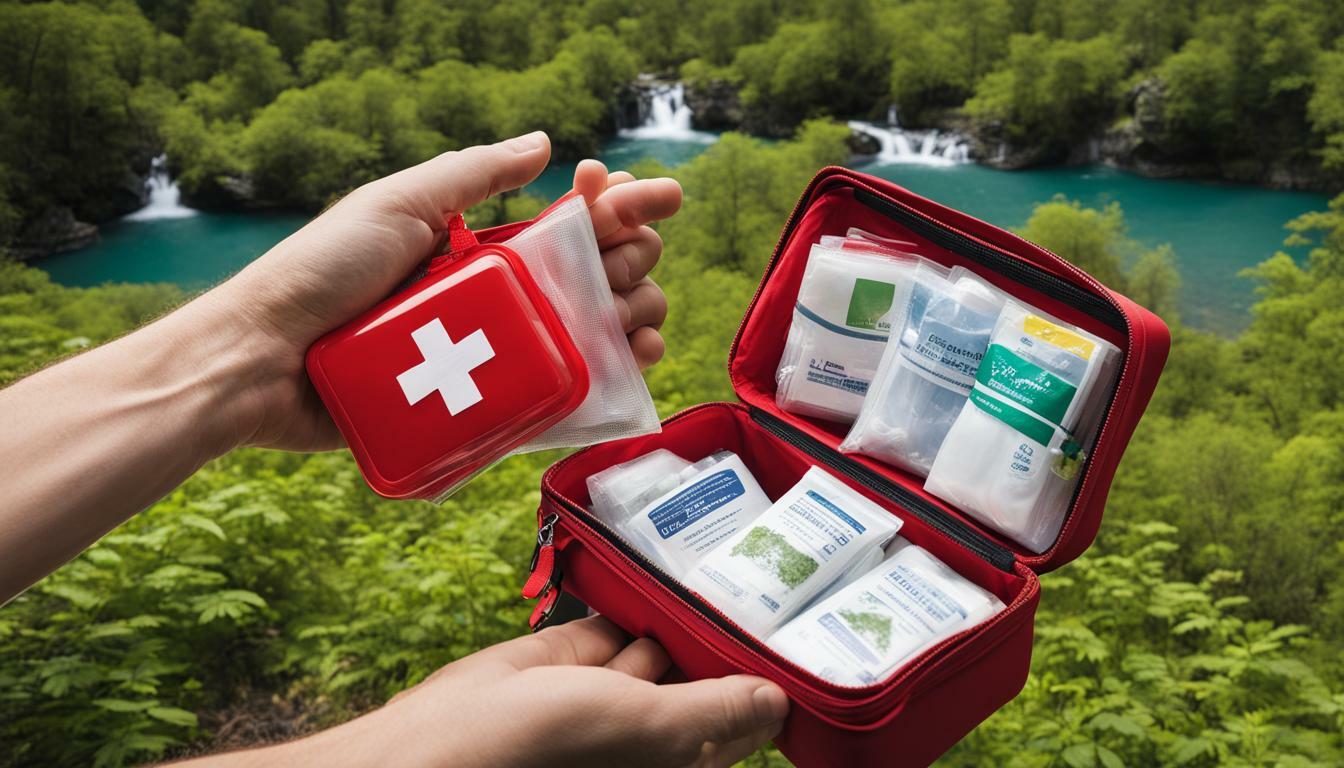
Nature Journaling Safety Essentials
As an adventure nature journalist, it is important to be prepared for any situation that may arise while exploring the great outdoors. Carrying the right safety equipment can make all the difference in ensuring a safe and enjoyable nature journaling experience. Here are some essential safety items to consider:
| Item | Purpose |
|---|---|
| Insect repellent | Protects against bites from insects such as mosquitoes and ticks, which can carry diseases. |
| Sunscreen | Protects against harmful UV rays and reduces the risk of skin cancer. |
| Protective clothing | Wearing clothing that covers the skin can offer protection against insect bites, sunburn, and scratches. |
| Reusable water bottle | Staying hydrated is essential when spending time outdoors. |
| Navigation equipment | Carry a map and compass, or a GPS device, to avoid getting lost while exploring unfamiliar territory. |
These safety items can contribute to a comfortable and safe nature journaling experience. However, it’s important to note that additional items may be necessary based on the specific location and conditions of your excursion. Always research the area beforehand and plan accordingly.
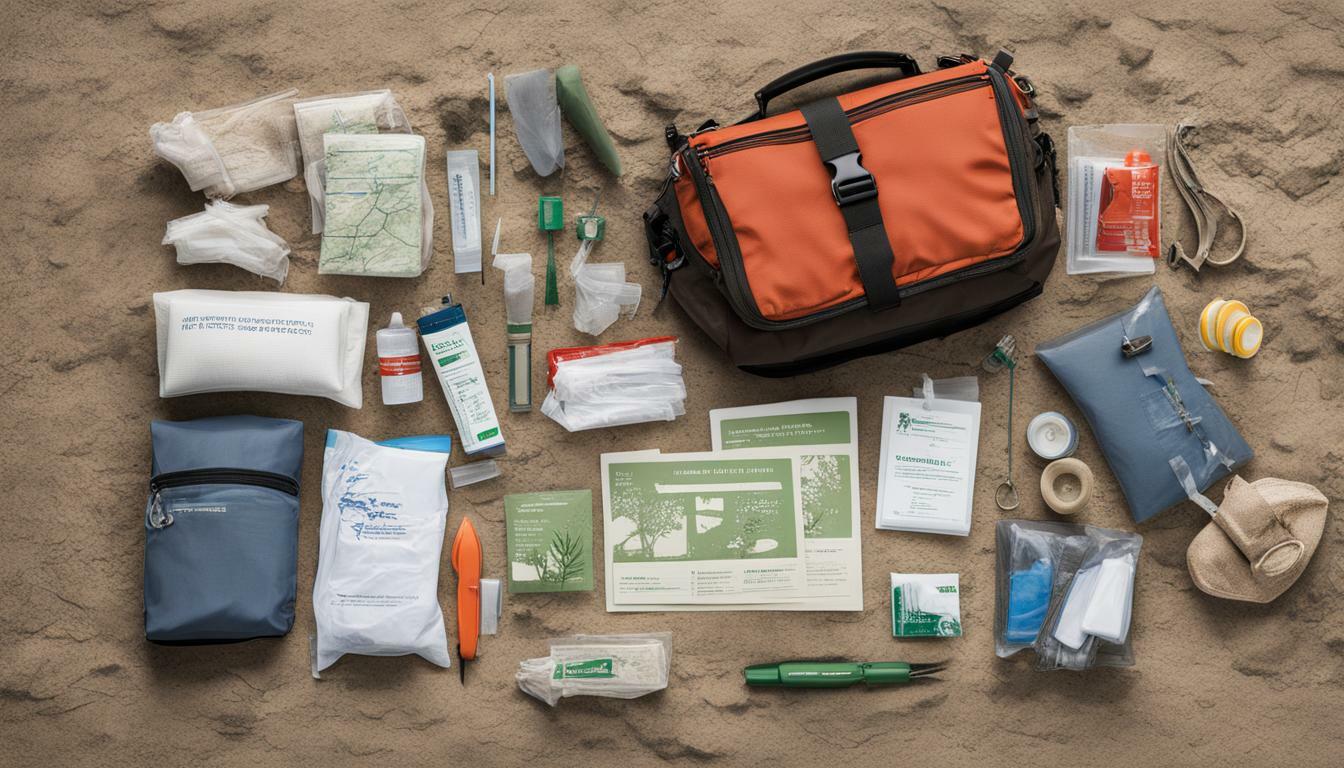
Choosing the Right First Aid Kit
When it comes to adventure nature journaling and sketching safety, having the right first aid kit is essential. There are a few key factors to consider when selecting a kit that meets your needs.
First and foremost, the size and portability of the kit is crucial. You’ll want a kit that is easily transportable and fits comfortably in your backpack or bag. Look for lightweight and compact designs that won’t weigh you down.
The variety of medical supplies included is also an important consideration. Your kit should include basic supplies such as bandages, gauze, antiseptic wipes, and tweezers. However, depending on your needs, you may want to consider a kit that also includes supplies like moleskin for blisters, a splint for fractures, or a tourniquet for severe bleeding.
Finally, it’s important to consider the level of training required to use the kit effectively. While basic kits may be suitable for minor injuries, more advanced kits may require additional training to use properly. Make sure you choose a kit that matches your level of first aid knowledge and experience.
Recommended First Aid Kits for Adventure Nature Journaling
| First Aid Kit | Size | Medical Supplies Included | Level of Training Required |
|---|---|---|---|
| Adventure Medical Kits Ultralight | Small and lightweight (5.9 oz) | Bandages, gauze, antiseptic wipes, ibuprofen, moleskin | Basic first aid knowledge |
| MyMedic MyFAK First Aid Kit | Medium (7.5″ x 5″ x 3″) | Bandages, gauze, antiseptic wipes, tourniquet, splint, SAM splint, EpiPen, Israeli bandage | Advanced first aid knowledge |
| Lifeline Trail Light Dayhiker First Aid Kit | Small and lightweight (6 oz) | Bandages, gauze, antiseptic wipes, sting relief pad, tweezers | Basic first aid knowledge |
Whether you’re a beginner or an experienced adventure nature journalist, having the right first aid kit can make all the difference in ensuring a safe and successful outdoor sketching experience. Choose a kit that meets your needs and matches your level of first aid knowledge, and you’ll be well-prepared for any unexpected situations that may arise.

First Aid for Sketching: Common Injuries and Treatments
When it comes to adventure nature journaling and sketching, injuries can happen unexpectedly. Being prepared with a first aid kit can help prevent minor injuries from becoming major issues. Here are some common injuries and treatments to keep in mind:
| Injury | Treatment |
|---|---|
| Cuts and scrapes |
|
| Sprains and strains |
|
| Bites and stings |
|
Remember to always carry a first aid kit and be familiar with the items inside. If you’re unsure about how to treat an injury, seek professional medical help. Keep in mind that first aid is meant to provide temporary relief until medical attention is available.
Adventure First Aid: Beyond the Basics
When venturing into nature for adventure nature journaling and sketching, it is essential to be prepared for any eventuality. While a well-stocked first aid kit is a fundamental component of any safety kit, there are additional items and techniques that can help in emergency situations.
Emergency Communication Devices: Carrying a reliable communication device such as a satellite phone or an emergency beacon can be a lifesaver in remote locations where there is no cellular coverage.
Basic Wilderness Survival Skills: Every adventure nature journalist should have a basic understanding of wilderness survival skills, including navigation, shelter building, and fire starting. In an emergency situation, these skills can make the difference between life and death.
| Navigation | Shelter Building | Fire Starting |
|---|---|---|
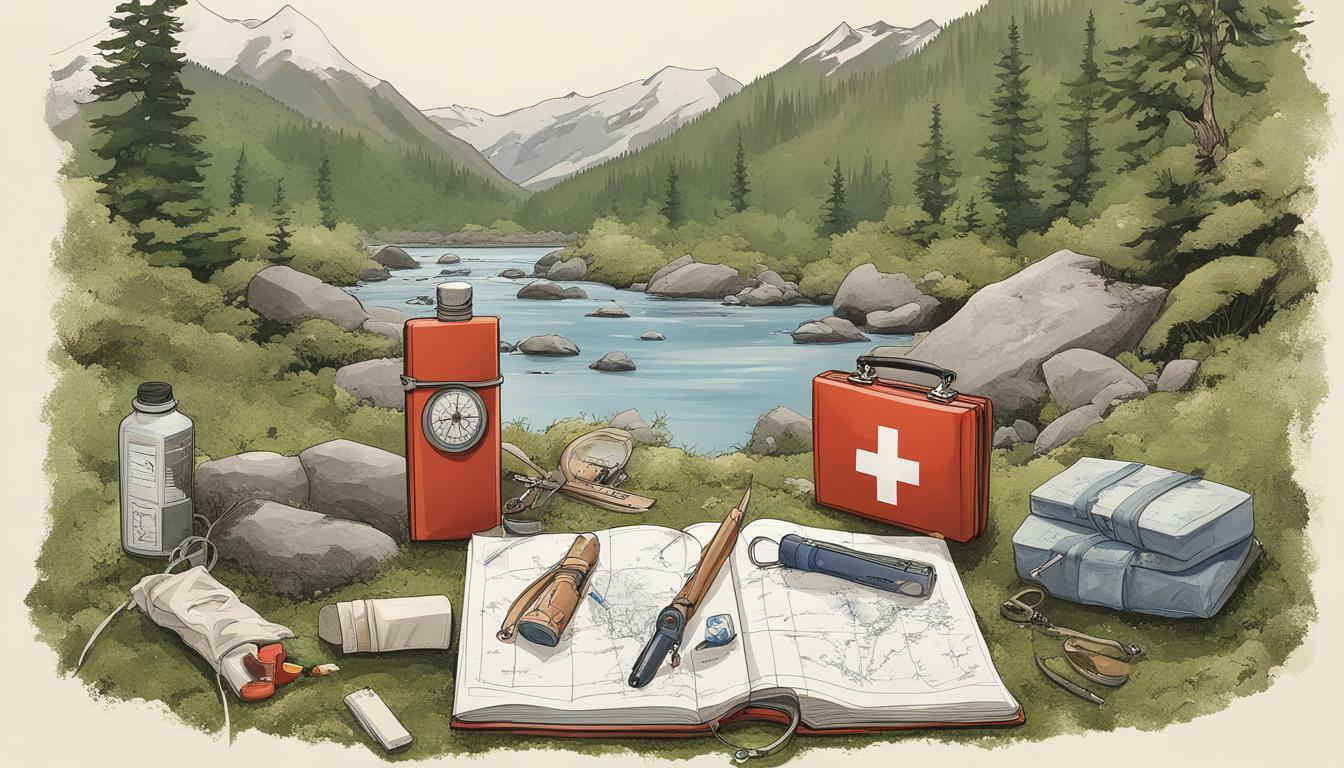 |  |  |
Handling Unexpected Scenarios: Even the most well-prepared adventure nature journalist can encounter unexpected scenarios. It is essential to remain calm, assess the situation, and act accordingly. This may involve seeking out help or using available resources to manage the situation until help arrives.
By going beyond the basics of first aid, adventure nature journalists can better prepare themselves for the unexpected and remain safe while exploring the beauty of nature.
Nature Journaling First Aid: Coping with Environmental Factors
Adventure nature journaling and sketching often involve being surrounded by nature, which can present a range of environmental hazards. It’s essential to be aware of the potential risks and take appropriate measures to address them. Here, we discuss some environmental factors to consider when preparing your first aid kit for nature journaling.
Allergic Reactions
Plants and insects can cause allergic reactions, so it’s crucial to carry antihistamines and hydrocortisone cream in your first aid kit. If you’re prone to severe allergic reactions, consider carrying an epinephrine auto-injector. It’s also a good idea to wear long-sleeved shirts and pants to minimize exposure to potential allergens.
Extreme Weather Conditions
Weather conditions can be unpredictable, and it’s essential to be prepared for any eventuality. Sunscreen and hats are essential to protect against sunburn, while warm clothing is necessary to prevent hypothermia in cold weather. Carry a rain poncho in your first aid kit, and be prepared to seek shelter if necessary.
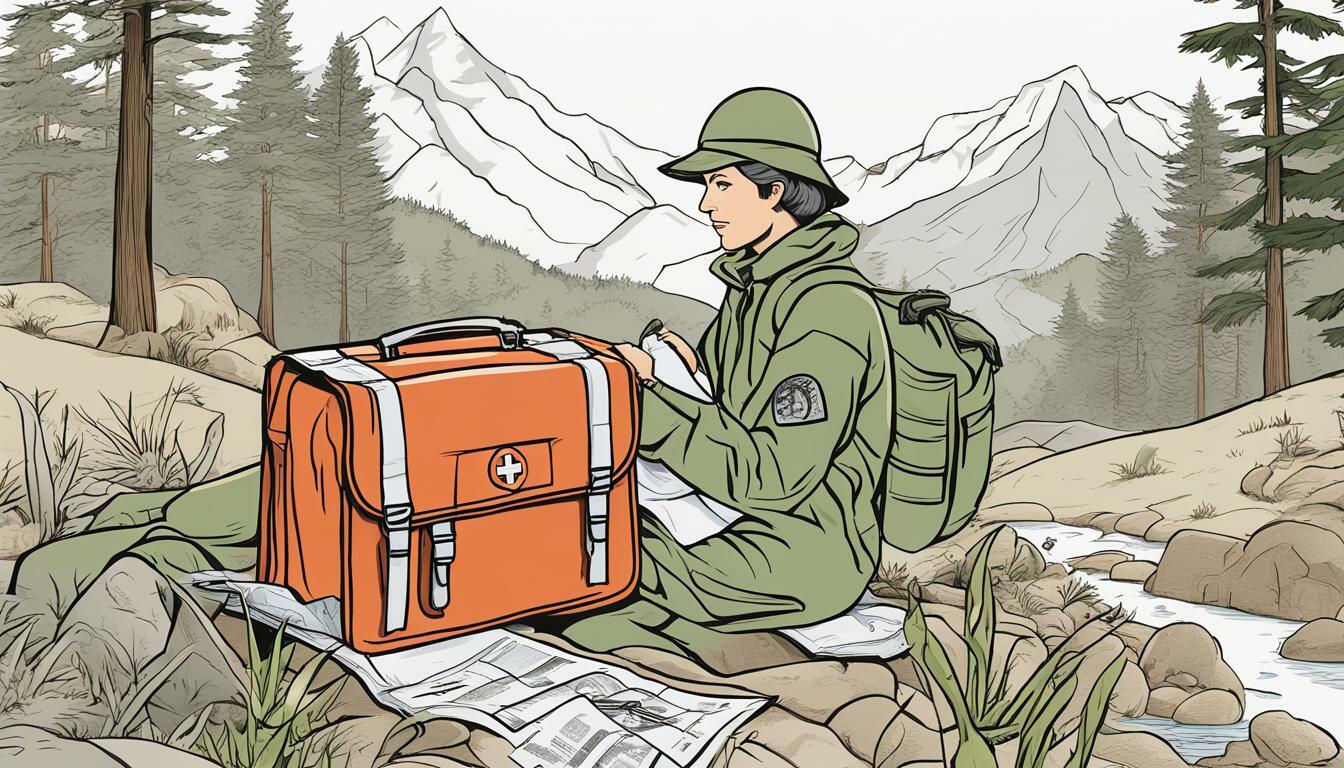
Dehydration
Dehydration is a common concern when spending time outdoors. Carry plenty of water and electrolyte replacement drink in your first aid kit. Consider carrying a hydration pack or water filtration system if you’ll be spending an extended period in the wilderness.
Navigation
Getting lost can be dangerous, especially in unfamiliar terrain. Carry a map and compass in your first aid kit, along with a GPS unit or a personal locator beacon. Check the weather forecast before you set out, and be prepared to change your plans if conditions aren’t favorable.
Conclusion
When it comes to nature journaling, being prepared is crucial for your safety and enjoyment. By carrying the right first aid kit and taking appropriate measures to address environmental factors, you can minimize risk and get the most out of your outdoor adventures.
Sketching Safety Tips: Prevention is Key
Adventure nature journaling and sketching require a certain level of physical activity and exposure to the elements. As such, it is essential to prioritize safety when venturing into nature for artistic pursuits. Here are some useful tips for maintaining a safe and enjoyable sketching experience:
- Wear appropriate footwear: Choose sturdy, comfortable shoes with good grip to avoid slips and falls on uneven terrain.
- Maintain good posture: Avoid hunching over your sketchbook for extended periods to prevent back and neck strain. Take frequent breaks to stretch and rest your eyes.
- Be aware of your surroundings: Stay alert for potential hazards such as loose rocks, low-hanging branches, or slippery surfaces. Avoid sketching near cliffs or dangerous wildlife.
- Stay hydrated: Bring plenty of water and take regular sips to avoid dehydration and heat exhaustion.
- Protect yourself from the sun: Use sunscreen with a high SPF, wear a hat and long-sleeved clothing to prevent sunburn and overheating.
- Carry a first aid kit: Be prepared for minor injuries and ailments by packing a suitable first aid kit for adventure nature journaling and sketching.
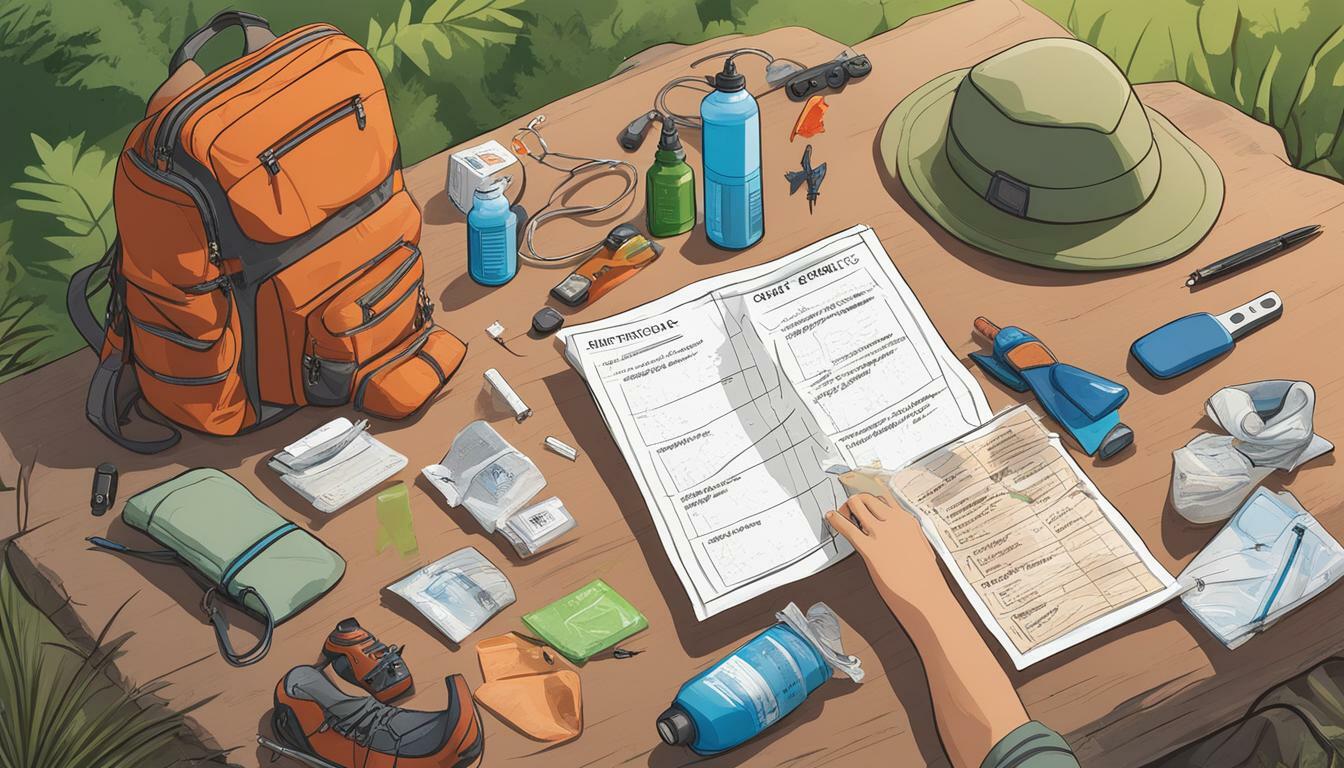
Remember, prevention is key when it comes to staying safe while sketching in nature. By following these simple guidelines, you can minimize the risks and enjoy a fulfilling artistic experience amidst the beauty of the outdoors.
Conclusion
In conclusion, adventure nature journaling and sketching can provide a wonderful way to connect with nature and explore artistic inspiration. However, it’s crucial to prioritize safety and be well-equipped for any eventuality. A well-stocked first aid kit is an essential component of adventure safety, and should be tailored to the specific needs of nature journaling enthusiasts.
Remember to consider factors such as size, portability, and the variety of medical supplies when choosing a first aid kit. Additionally, being aware of common injuries and knowing how to treat them can prevent small mishaps from becoming major problems.
Be Prepared for Anything
Adventure first aid goes beyond the basics of wound care and sprain management. It’s essential to be prepared for any eventuality, including emergency communication and basic wilderness survival skills. By staying informed and aware of environmental hazards, nature journaling enthusiasts can minimize risks and stay safe and healthy.
Prevention is key when it comes to sketching safety. Prioritize wearing appropriate gear and equipment, and being aware of your surroundings. By following these simple guidelines and using common sense, adventure nature journaling enthusiasts can enjoy the beauty of nature while staying safe and well-prepared.
